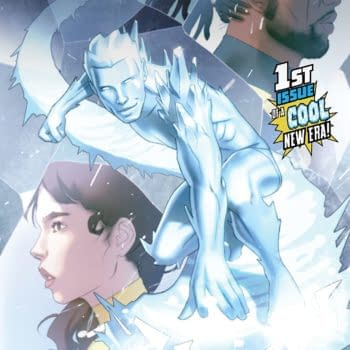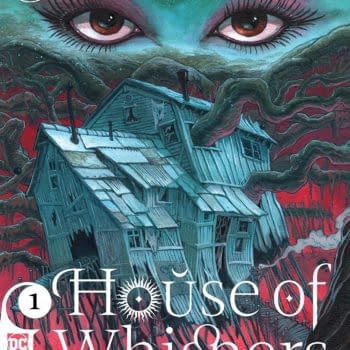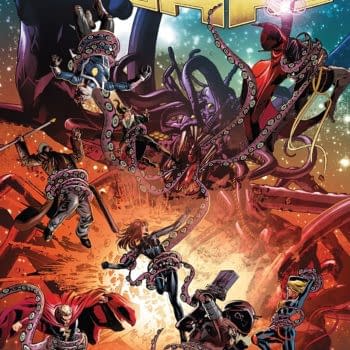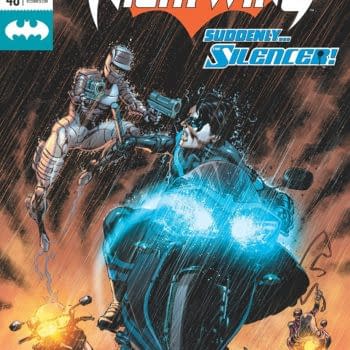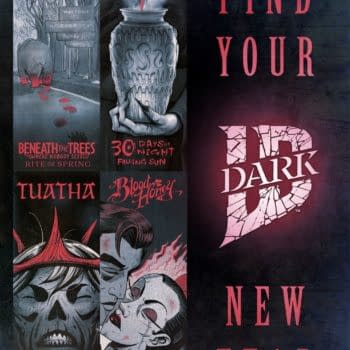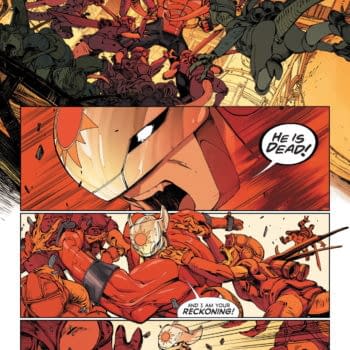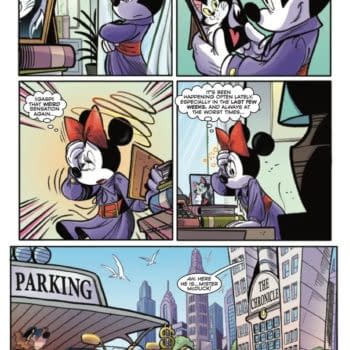Posted in: Comics, DC Comics, Marvel Comics | Tagged: dc comics, DC Universe Rebirth, geoff johns, Gerry Conway, gil kane, girlfriend in the fridge, green lantern, gwen stacy, gwen stacy moment, Hal Jordan, HRL, Marvel Comics, new 52, rebirth, sinestro, spider-man, The Night Gwen Stacy Died
It's OK That There Won't Be Another Gwen Stacy Moment
I recently wrote an article about the possibility of there being another all-encompassing, dramatic moment in comic books like "The Night Gwen Stacy Died".
I ended up saying, no, I don't believe that there could be another Gwen Stacy moment. It'd be spoiled beforehand, death isn't permanent enough in mainstream superhero comics to really have an impact, and there is an air of tackiness to it that was perfectly realized in the reviled "girlfriend in the fridge" moment of Green Lantern comics.
That last point we'll revisit in this article, and I also said there was a fourth reason it couldn't happen in the same way.
That reason is that there are just too many comics out there for everyone to be reading the same thing and at the same time like back in 1973. Sure Amazing Spider-Man is still one of Marvel's top-sellers and is often the top-seller, but that's still not everyone. Hell, I don't have Amazing Spider-Man on my pull list and don't see doing adding it in the near future.
Marvel was in its adolescence at the time, and DC was just getting back into the swing of things after the 1950s slump. There weren't nearly as many heroes, teams, and options to choose from. I have criticized DC for not making use of its vast catalog of heroes, but I will admit that they use more simultaneously now than they did back then. In fact, they were axing many of the comics they did have at the time.
And it's good that there are more options now. People can curate their reading for themselves and aren't stuck with a handful of choices of super hero fiction to choose from.
We can still have those unifying moments; they're just different now. The beginning of DC Universe: Rebirth is a recent example that comes to mind. The Watchmen implications, the return of Wally West, promising the return of the Justice Society as we know it — all of these things resonated with a lot of readers. Sure, a couple of those promises haven't solidified yet (such as the Justice Society, dammit), but it was still a great moment to be a comic book reader in. Everyone was talking about it.
Something else that DC Universe: Rebirth accomplished that "The Night Gwen Stacy Died" didn't was being able to have this emotional resonance without killing somebody. That seems like a weird observation, I know, and it also answers problems that comics have in 2017 that they didn't have in 1973.
Death hadn't been killed yet in 1973.
Today, we are so used to the impermanence of death that it's no longer a good way to emotionally engage with the audience. Secret Empire killed Rick Jones, a character that has been around since the early days of the Marvel Age. There was no emotional anguish over this from the wider comic book readerdom. If anything, cynicism and exasperation were the most common responses. That is not a good reaction to your big, shocking death.
As such, comic writers need to find new ways to emotionally engage with their audience. While killing a character isn't a bad way to strike a note, just ask the ratings powerhouses Walking Dead and Game of Thrones, it's the most direct way and, some might say, the cheapest way. It's a surefire way to shock someone, because we are all cursed with knowing that we will all die someday, and we have no way of stopping it or predicting it outside of ending ourselves.
Wow, that got really nihilistic for a second.
But the point remains. We fear death, so invoking death is often the best way to make us pay attention. Comics in which characters die still sell really well.
Finding other ways to engage with an audience not only escapes banality, but it requires an extra bit of creative work. This goes back to how tacky "The Night Gwen Stacy Died" would seem today. It would almost seem too easy. Oh, you killed Spider-Man's girlfriend, big whoop.
Plus, it would seem tacky because of girlfriend in the fridge trope. Sorry, those two moments really aren't all that different.
To illustrate the point, I'd like to go back to Green Lantern vol. 5 #20. This was Geoff Johns' final writing credit on the New 52 Green Lantern title. While, yes, Sinestro killing the Guardians and Hal Jordan killing Volthoom were both really cathartic moments, there is another moment I remember most:
That moment has always stuck with me. Here, we have two bitter enemies who have tried to kill one another more times than either could count having to admit they have so much in common, and that they're friends. I loved it. I'll always love it. No one had to die for that moment to stick with me. People did, mind, but the death isn't what made that memorable. It was the characters and the realization that the more stubborn of the two had to arrive at.
So that's that; I think it's OK that we won't have another Gwen Stacy moment. Marvel and DC publish more comics than they did back in 1973. We have more variety in our superhero fare, and that's great. It's awesome. On top of that, they have more outside competition than they once did. There are plenty of alternative publishers, and it's easier for indies to get their work out there than it ever has been before.
Plus, death doesn't have the same impact. It doesn't shock us as much as it used to due to overuse and its impermanence in comics. So they have to find other ways to engage us. That's great too. That means they have to get more creative and not just invoke the one thing all humans fear most.
There will never be another "The Night Gwen Stacy Died", and I'm completely happy with that.






